Octopus (18 page)
Authors: Roland C. Anderson

Plate 6.
Divers are in the water preparing to dive in the Seattle harbor. It is surprising to see an active dive site so close to the busy downtown. Seattle Aquarium.
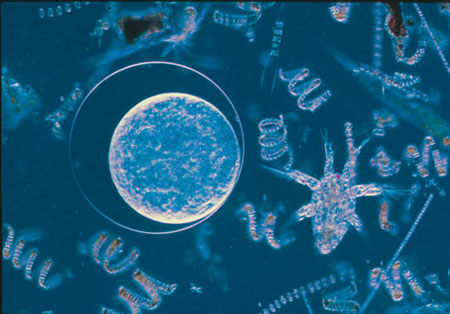
Plate 7.
Planktonic organisms come in a range of shapes and sizes. Seattle Aquarium.
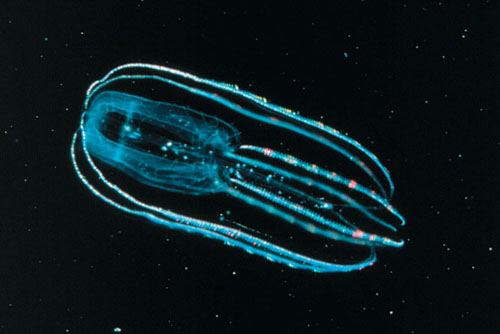
Plate 8.
This comb jellyfish, or ctenophore, is one of the predators of the plankton, small to a human but huge to an octopod paralarva. National Oceanic and Atmospheric Administration, Department of Commerce.
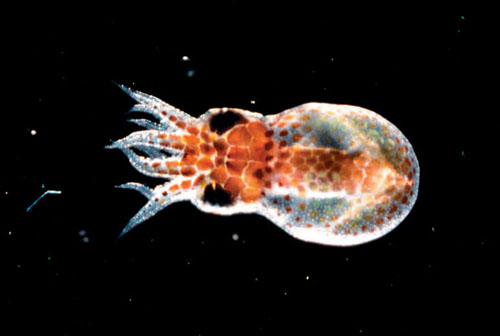
Plate 9.
The body proportions of this paralarval Caribbean pygmy octopus (
Octopus joubini/mercatoris
) are clearly different from those of adult octopuses. John Forsythe.
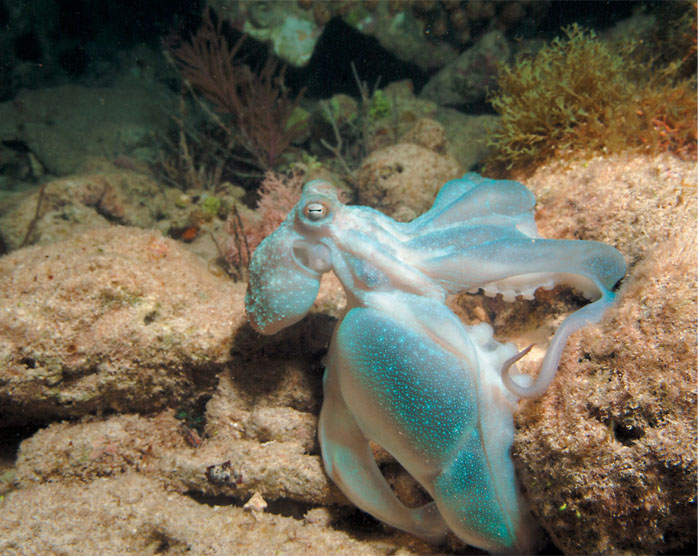
Plate 10.
This Caribbean reef octopus (
Octopus briareus
) is enveloping an area of the sea bottom with its spread arms and web. It will then explore the enclosed area with its outer arms for prey. Dry Tortugas National Park. James B. Wood.
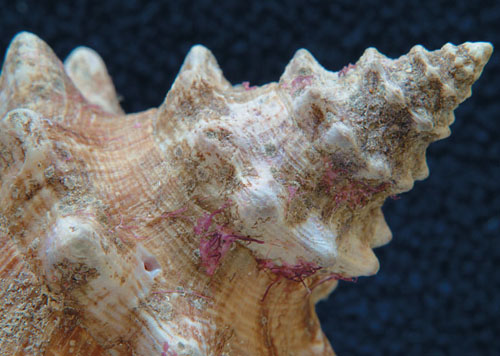
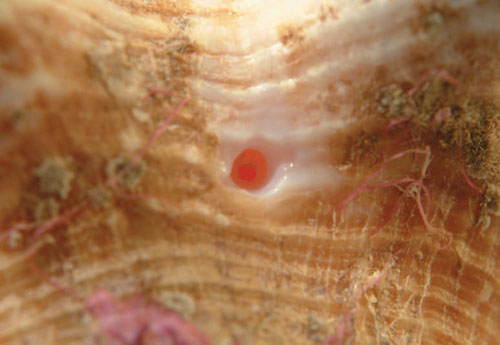
Plate 11.
These two images show an octopus drill hole in the shell of a giant conch (
Strombus gigas
) from the Caribbean island of Bonaire. James B. Wood.
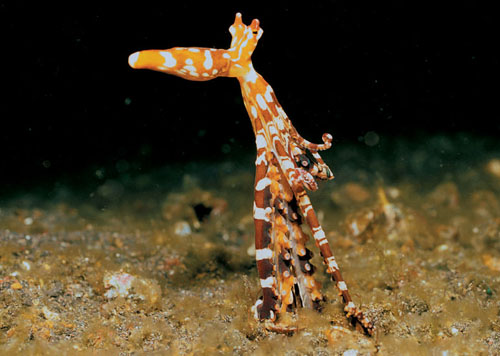
Plate 12.
Some species of octopus, such as this wunderpus (
Wunderpus photogenicus
), burrow into and live in sand and mud. Roy Caldwell.
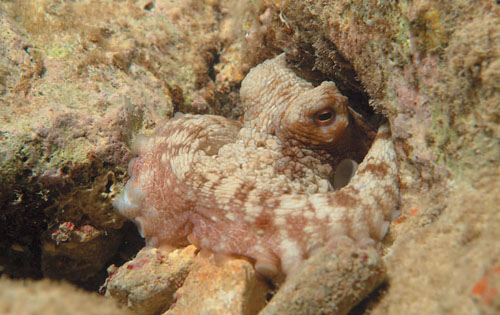
Plate 13.
This common octopus (
Octopus vulgaris
) at the small island of Bonaire in the Caribbean Sea is well protected in its rocky crevice. It collected rocks to put in front of the den opening. James B. Wood.
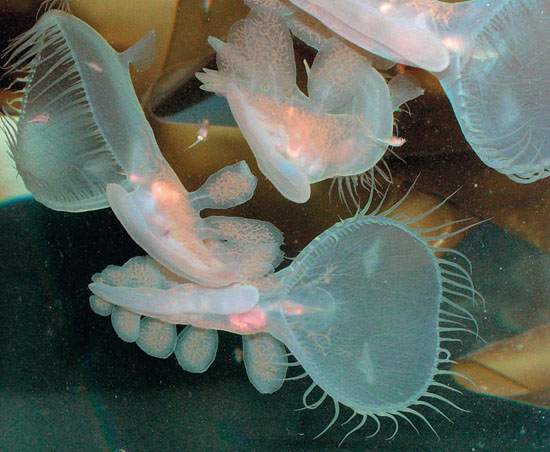
Plate 14.
These shell-less mollusks, lion nudibranchs (
Melibe leonina
), swim by bending their laterally flattened body and feed by scooping with their oral hood. Seattle Aquarium.
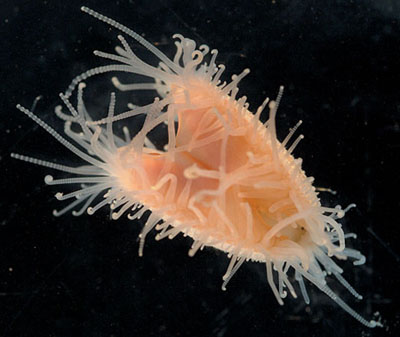
Plate 15.
Scallops and this file clam (
Ctenoides
sp.) in Bonaire, an island in the Netherlands Antilles, use jet-propelled swimming by clapping shell valves together. James B. Wood.
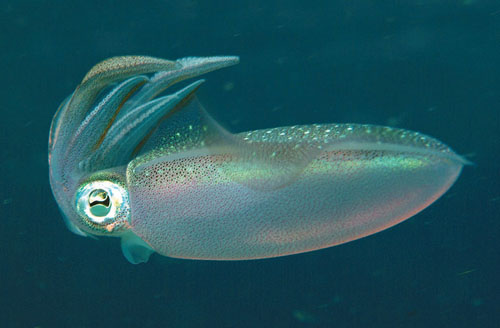
Plate 16.
A close look at this Caribbean reef squid (
Sepioteuthis sepioidea
) in Bonaire reveals the dual locomotion systemâthe funnel for jet propulsion (pointed downward, below the eye) and the lateral fins (along the sides) that undulate up and down. James B. Wood.
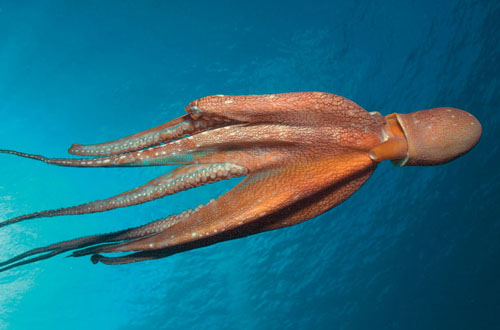
Plate 17.
This giant Pacific octopus (
Enteroctopus dofleini
) has flattened itself in a gliding posture, which minimizes resistance and provides lift. © Stuart Westmorland 2009, http://www.stuartwestmorland.com.